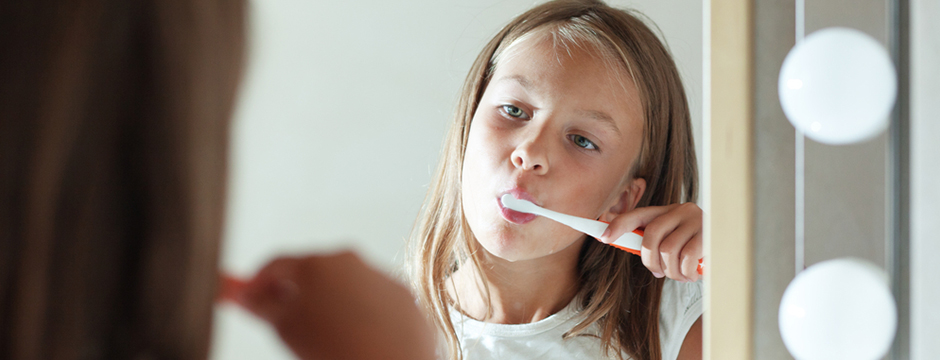5 common myths about water fluoridation

And why dentists recommend you drink fluoridated tap water…
An important poll by The Royal Children’s Hospital National Child Health has just been released, revealing startling statistics around a lack of dental health knowledge in Australian adults and children. In fact, more than 50% of the population think that bottled water is better for kids to drink than tap water. But this is not the case. Why? Because tap water contains fluoride. And fluoride is highly beneficial for your teeth.
Many parts of the developed world have been purposefully adding fluoride to our drinking water for over 60 years. We have a massive body of evidence gathered over this time, revealing that water fluoridation is still one of the most major public health achievements of the 20th century. The scientific consensus is that not only is it safe, but it helps to prevent tooth decay.
Water fluoridation is endorsed worldwide, by powerful authorities such as the World Health Organisation, Australia’s National Health and Medical Research Council (NHMRC), the Australian Dental Association, the World Dental Federation, and the US Centre for Disease Control and Prevention. Yet, myths around fluoride abound.
Common myths around fluoride
Myth #1: Fluoride is not natural
“I don’t want chemicals in my water” is a common refrain amongst well-meaning parents. It’s understandable that parents want the best for their kids and don’t want any added “nasties”, especially if, through misinformation, they think of fluoride as some unnatural industrial chemical.
But here’s the thing: Everything is a chemical. Water is a chemical, also known as dihydrogen monoxide (H2O). Fluoride is a naturally occurring substance found in surface water and rocks that leach into groundwater. The amount of naturally occurring fluoride varies greatly around the world, depending on the type of water and a type of minerals and rocks it is in contact with.
You’ll find fluoride in natural water supplies, even ocean water. In some parts of the world, such as a particular belt in East Africa, there’s too much fluoride in the water for drinking. (WHO consequently classifies such areas as ‘natural hazards’.)
Then, there are places in the world, such as parts of Victoria, where fluoride naturally occurs – in levels that are optimal for our needs, that being 1 ppm.
Myth #2: Fluoride is toxic

Well, fluoride is toxic, if it consumed in high doses. But it is the dose that makes the poison. For example, formaldehyde is highly toxic, but you’ll find formaldehyde in pears – or bananas, grapes, carrots – even poultry and beef.
Another common retort by the anti-fluoride brigade is that if it were safe, why are children not allowed adult fluoride toothpaste? The answer is simple. Children don’t have the same gag reflexes as adults and can easily swallow toothpaste. Fluoride toothpaste has been designed to spit out, not swallow. If children swallowed fluoride toothpaste, then levels could be dangerous. Hence, we’ve created children’s toothpaste with far lower levels of fluoride that are safe to ingest.
Myth #3: Fluoride causes cancer
Drinking fluoride in amounts that we are exposed to is safe. The NHMRC found reliable evidence to suggest that water fluoridation, again in the suggested levels for Australian drinking water, is not associated with brain damage, cancer, Down syndrome, lowered intelligence, hip fractures, high blood pressure, osteoporosis, skeletal fluorosis or several other conditions. The NHMRC’s findings were consistent with other international health bodies, such as the WHO and other reputable sources as listed above.
The only condition that may affect some individuals drinking fluoridated water is dental fluorosis. Would fluorosis, the fluoride affects how the tooth enamel is mineralised and results in small cosmetic changes such as tiny white flecks or lines appearing on the teeth. However, moderate dental fluorosis is extremely uncommon. Extreme fluorosis is even rarer.
Myth #4: Fluoride doesn’t work
Some people think that because tooth decay is still a problem where fluoridated tap water is available, this is proof that fluoride doesn’t work. This is a bit like saying that because some people die in car accidents while wearing seatbelts, there is no need to wear seatbelts.
Caring for our teeth, much like anything else, involves practising several preventative measures that give the best possible chance to keep our teeth healthy throughout our life. Fluoride is not the only answer. For example, we recommend brushing teeth twice daily, floss, avoiding sugary foods, having regular dental check-ups – and drinking tap water.
Myth #5: It’s a conspiracy
Unfortunately, there’s not much we can say to those believing conspiracies. As with the minority that believe the earth is flat or the government is spraying us with chemtrails, we can’t logically argue with those that believe the government is out to poison us with neurotoxins

But we will leave you with one final thought: if the government, or all dentists, were trying to kill us, we wouldn’t suggest fluoride. Instead, they would let your teeth rot because that is the surest and fastest way to give you unnecessary problems (and expenses) in life. But we certainly don’t want to do that. As dentists, we encourage everyone to practice preventative dental care.
So please, for the sake of your teeth, drink fluoridated tap water. It’s cheap, harmless and will help you and your family have the best possible chance of good dental health.


